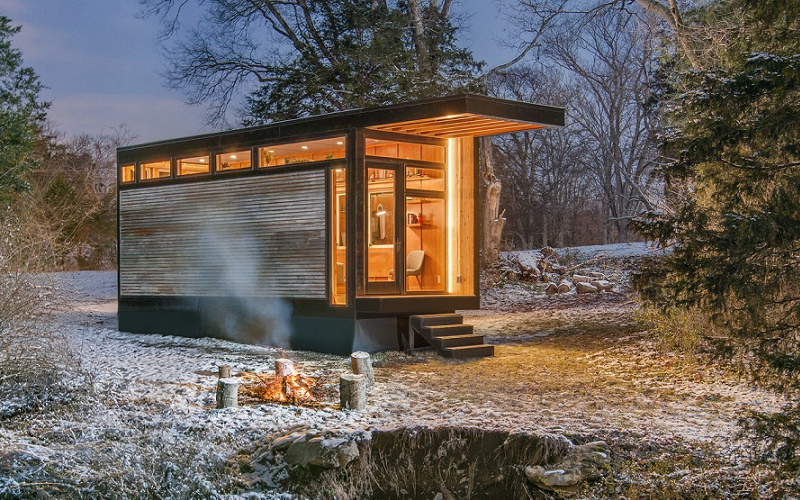A tiny home is a small, typically less than 400 square feet, dwelling that emphasizes simplicity and minimalism. Tiny homes can be mobile or stationary, and can be designed to be off-grid or connected to utilities. The main idea behind tiny homes is to simplify one’s life and live with less stuff, reduce environmental impact, and save money on housing costs.
What Are Tiny Homes?
A tiny home is a small, compact dwelling that prioritizes simplicity and efficiency in both design and lifestyle. These homes are usually less than 400 square feet in size and can be built on a foundation or on wheels, making them portable. The concept of tiny homes has gained popularity in recent years as a response to the high cost of traditional housing, environmental concerns, and a desire for a more minimalist lifestyle.
Tiny homes often have a minimalist design, with multi-functional spaces and creative storage solutions to make the most of the limited space. They are also often built with sustainability in mind, using environmentally-friendly materials and technologies such as solar panels.
Living in a tiny home can be a significant adjustment, as residents must learn to live with less stuff and adapt to the limited space. However, for those who embrace the lifestyle, tiny homes offer an affordable, sustainable, and unique housing option. It’s important to research and understand the regulations and zoning laws surrounding tiny homes, as they vary widely depending on location.
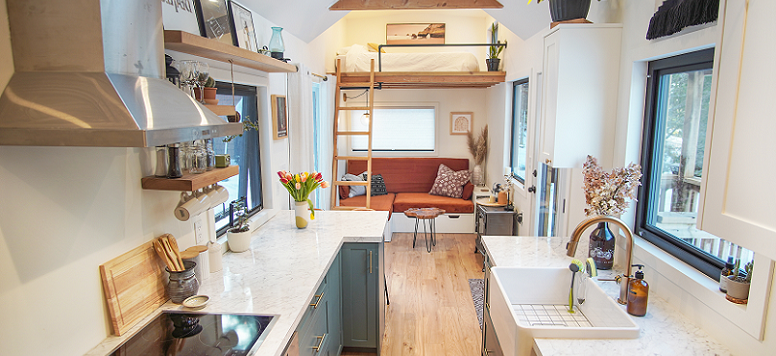
Tiny Home Cost
The cost of a tiny home can vary widely depending on several factors, including size, materials, and level of customization. On the lower end, a basic tiny home may cost as little as $20,000 to build yourself, while a professionally-built, fully-finished tiny home can cost upwards of $100,000 or more. On average, a professionally-built tiny home can cost anywhere from $40,000 to $80,000.
You should know that the cost of a tiny home includes not only the construction costs but also any necessary equipment and appliances, as well as any fees for hooking up to utilities such as water, sewage, and electricity.
It’s worth considering the cost of transporting a tiny home, as well as any ongoing expenses such as property taxes, insurance, and maintenance. Despite the initial cost, many tiny home owners find that they save money in the long run due to lower housing costs and a simpler, more sustainable lifestyle.
Sustainability of a Tiny Home
Tiny homes can offer a more sustainable lifestyle compared to traditional homes, due to their smaller size and often use of environmentally-friendly materials and technologies. Some of the ways tiny homes can be more sustainable include:
- Energy efficiency: Tiny homes are often designed to be highly energy-efficient, with well-insulated walls, efficient appliances, and sometimes the use of renewable energy sources such as solar panels.
- Water conservation: Many tiny homes have small, efficient water systems, which can help reduce water usage.
- Waste reduction: Tiny homes generate less waste due to their small size, and some owners opt for composting toilets and other sustainable waste management solutions.
- Material use: Tiny homes often use sustainable building materials, such as bamboo or reclaimed wood, which can help reduce the environmental impact of construction.
- Carbon footprint: Tiny homes have a smaller carbon footprint compared to traditional homes due to their smaller size and often use of energy-efficient technologies.
You should be aware that the sustainability of a tiny home can also depend on the lifestyle of the owner. For example, using a car for transportation instead of biking or walking can offset some of the environmental benefits of living in a tiny home.
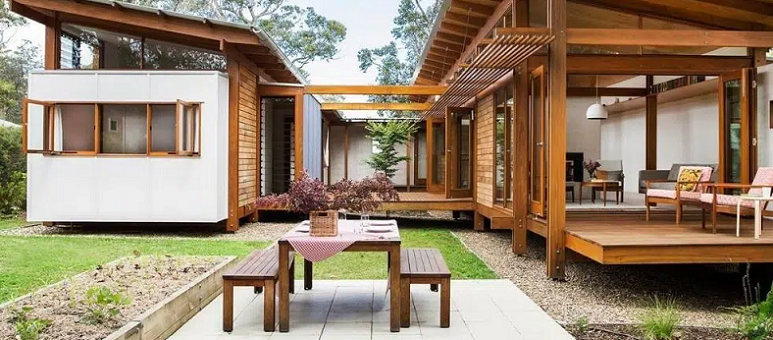
Zoning and Building Codes That Affect a Tiny Home
The zoning and building codes that affect tiny homes can vary greatly depending on the location and local regulations. In some areas, tiny homes may be classified as recreational vehicles (RVs) and are subject to RV-specific codes, while in others they may be considered primary residences and be subject to residential building codes.
You should research and understand the regulations and zoning laws in your area, as well as any requirements for obtaining building permits or connecting to utilities, before starting construction or moving into a tiny home. Some common factors that may affect the zoning and building codes for tiny homes include:
- Minimum square footage: Many areas have a minimum square footage requirement for homes, which tiny homes may not meet.
- Minimum lot size: Some areas have minimum lot size requirements that a tiny home must meet in order to be considered a legal dwelling.
- Permanent foundations: Some areas may require a tiny home to be built on a permanent foundation, rather than on wheels.
- Accessory dwelling units (ADUs): In some areas, tiny homes may be considered ADUs, or secondary dwellings, and subject to different regulations.
- Setbacks and height restrictions: Some areas may have restrictions on the distance a tiny home must be set back from property lines, as well as restrictions on the height of the home.
Tiny Home Mobility
The mobility of a tiny home refers to its ability to be transported from one location to another. Tiny homes built on wheels, commonly referred to as “tiny house trailers,” are designed to be mobile and can be hitched to a truck or other vehicle for movement.
The mobility of a tiny home can be a significant advantage for those who wish to live in different locations or who do not want to be tied to a specific piece of property. Tiny homes on wheels can be moved to different locations, such as campgrounds, RV parks, or even family property, allowing for a degree of flexibility and freedom in choosing where to live.
However, it’s important to research the regulations and restrictions for towing a tiny home in your area, as well as the weight limits for towing and the required equipment for doing so safely. In some cases, a special permit may be required to move a tiny home on the road.
In addition to being able to move a tiny home, some tiny home owners choose to keep their homes in one place, either on a foundation or rented lot, and enjoy the benefits of a smaller, more sustainable home while still being able to travel and explore different areas.
Overall, the mobility of a tiny home can be a key factor for those seeking a flexible and low-maintenance lifestyle, but it’s important to consider the costs and responsibilities associated with moving and maintaining a tiny home on wheels.
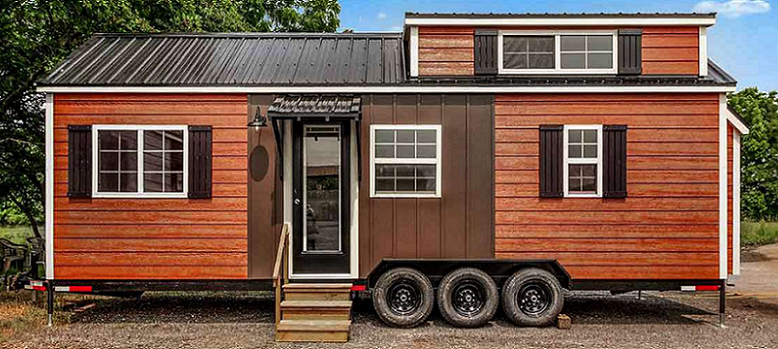
Amount of Living Space In a Tiny Home
The amount of living space in a tiny home can vary greatly, but most tiny homes are designed to be compact and efficient, with a focus on maximizing useable space. Tiny homes typically range in size from around 100 to 400 square feet, with an average size of around 200-300 square feet.
In a tiny home, every inch of space is carefully planned and optimized, often with built-in or multi-functional furniture to maximize storage and living space. Despite their small size, many tiny homes are designed to feel spacious and comfortable, with high ceilings, large windows, and smart design features that make the most of the limited space.
While the small size of a tiny home can be a major advantage for those looking to simplify their lives, it’s important to consider the amount of living space and whether it will meet your needs. For some people, the limited space in a tiny home can be a challenge, especially if they are used to having more room or if they have a large family.
Ultimately, the amount of living space in a tiny home is a personal decision that depends on individual lifestyle and priorities. It’s important to carefully consider your needs and desires, and weigh the benefits and challenges of living in a smaller space, before choosing a tiny home.
Lifestyle of a Tiny Home Owner
The lifestyle of a tiny home owner can vary greatly, but it is often characterized by a focus on simplicity, sustainability, and a connection to nature. Many tiny home owners choose this lifestyle as a way to simplify their lives, reduce their impact on the environment, and live more intentionally. Some common aspects of the tiny home lifestyle include:
- Minimalism: Tiny homes often promote a minimalist lifestyle, as the limited space forces owners to prioritize and simplify their possessions and belongings.
- Sustainability: Tiny homes are often designed to be energy-efficient and eco-friendly, with features such as solar panels, composting toilets, and water catchment systems.
- Connection to nature: Many tiny home owners choose to live in natural settings, such as rural areas or in mobile homes that can be transported to different locations. This allows them to be close to nature and enjoy outdoor activities such as camping, hiking, and gardening.
- Community: The tiny home movement has a strong community aspect, with many tiny home owners sharing resources and experiences, and participating in events and gatherings with others who have chosen this lifestyle.
- Financial freedom: For many tiny home owners, the cost savings and reduced expenses associated with living in a smaller space can provide financial freedom and flexibility.
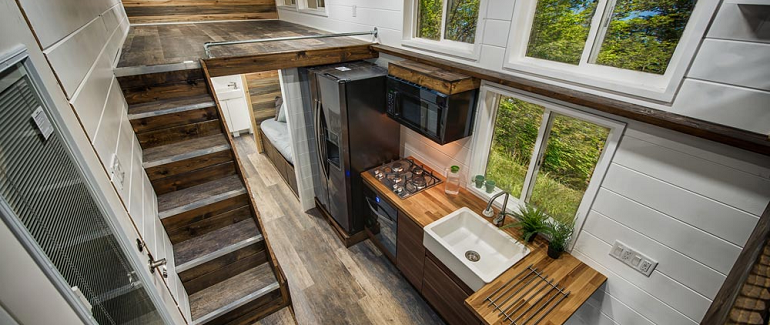
Advantages of Owning a Tiny Home
Tiny homes offer a range of benefits for those seeking a simpler, more affordable, and sustainable way of life. Here are some of the advantages of tiny homes:
- Affordability: Tiny homes are often significantly less expensive than traditional homes, both in terms of initial cost and ongoing expenses such as utilities and maintenance.
- Mobility: Many tiny homes are built on wheels, allowing owners to move them easily from one location to another.
- Reduced environmental impact: Tiny homes have a smaller carbon footprint compared to traditional homes due to their smaller size and often use of sustainable materials and technologies.
- Minimalist lifestyle: Tiny homes promote a minimalist lifestyle, allowing residents to live with less stuff and focus on what truly matters.
- Simplified maintenance: With fewer rooms and a smaller living space, tiny homes are easier to clean and maintain.
- Reduced debt: The lower cost of tiny homes can help owners avoid taking on large amounts of debt, allowing them to live a more financially stable life.
- Unique design: Tiny homes often feature unique and creative design elements, making them a unique and personalized living space.
- Community: Tiny home communities are growing in popularity, offering residents the chance to live in a supportive and like-minded community.
While the tiny home lifestyle can offer many benefits, it’s important to carefully consider the challenges and limitations associated with living in a smaller space, as well as the lifestyle changes that may be required. It’s also important to research local zoning and building codes to ensure that living in a tiny home is allowed in your area.

